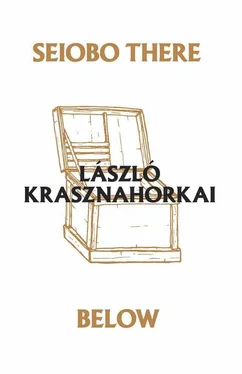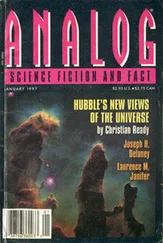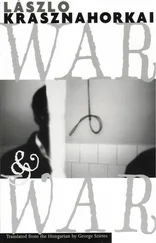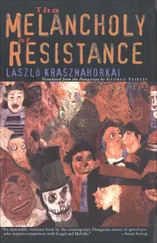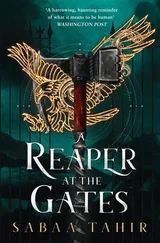He went to get the linden himself, and as a matter of fact, he really would have liked to complete the entire commission on his own, but the others in the artel — among them his son Feodosiy — were convinced that the master did not wish to work alone, for surely they could, just as they had been doing for years, help him out with this or that, finally — already this was somewhat typical of the era as a whole, and many such matters were similarly concluded out of a love of comfort — it was permitted, and so they allowed him to select for himself the linden wood best suited to the original Rublev; but already they did not allow him to squander his sacred gift on completing the planing, the joining, and the gluing of the icon board, or the formation of the two sponki, that is the two crossbars crafted from beech wood, whose function it was to hold the board together, as well as the hollowing out of the space for the two sponki, the so-called “sponki vrezniye vstrechniye,” they did not allow him to complete this work alone; there first came, accordingly, someone who sawed and planed and hollowed and fitted and glued and assembled the icon board and tautened the tightening bars, then someone came who completed the work pertaining to the sponki, then the polye was created to demarcate the border formed by the luzga — that is the border-area beveled inward — and the kovcheg — done by the one who was best at this — followed the direction of the luzga, already drawn; deepening the paintable surface, as it were framing it; because just as in the case of all other icons, the very first order of business was to ensure that the polye, the luzga, and the kovcheg were in good order, moreover in this particular case it was also mandatory for all three parts to correspond to a hair’s breadth to the original, that is to say the polye had to be in the same place and of the same extent, the luzga had to be beveled in the same way and at the same angle, and at last the kovcheg had to be as deep and as straight as related by the descriptions of the original in Radonezh, so that after this the priming-master of the artel could take up his work and with his assistants prepare for the canvas that would be glued onto the surface to be painted; the levkas — that is the diluted glutinous liquid — mixed with chalk dust, was applied, in this case, in exactly eight layers, to the icon board, and when finally the last layer of levkas had dried, and it had become as smooth and clean as it possibly could, then there came the znamenshchik, the composition master, who was one of the most important personages in the artel, and especially here in the artel of such a famous painter, for he was the one who, for instance, could now, upon the surface of the completely dried levkas, sketch in, following the outlines of the Radonezh drawing originating from the Master’s hand, with unerring assurance and fidelity, the three angels, infinitely gentle, with their enormous wings, gathered around the table; and behind them the outlines of the church, the tree, and the cliff, the table with the chalice and the platter filled up with veal; the entire artel stood behind his back with bated breath, as his instrument, the grafia, did not quiver even once in his hand; all of this, of course, from the assembly of the icon boards to the work of the znamenshchik proceeded self-evidently in such a way that it was not just the assistants and master of the artel who observed each other, but at each individual phase of the work the Master himself stood behind the backs of those who were working, and it remained so in the following phases up to the end, for this was not just any old work; the Master observed from behind to see if the paints, that is the lapis lazuli, the vermilion, and the rust and the malachite and the white, indeed, even the beaten egg-yolks corresponded exactly to that which had been chiseled into his memory as he stood immersed before the Radonezh original for all time; he stood there at the back, and he prayed, while first the lichnik and the dolichnik set to work, painting what was entrusted to them; the lichnik, in this case, exceptionally, just the arms and the legs instead of the face, the dolichnik, however the khitons and garments — and no matter, the Master governed every movement, practically guiding the hand of the lichnik and the dolichnik, so that it could be asserted with confidence that the Master himself had done everything from first to last, for it was evident that his assistants in the artel were obedient to his volition — namely, through the Master’s prayers, the volition of the Highest — until the famous copy reached the phase where there was no longer any intermediary assistance, where the Master could not entrust the task to another, where he himself had to take the brush, dip it into the paint-stained dish, and paint the faces, the mouths, the noses, and the eyes and, although according to the accustomed order of things as the last great phase of the painting, at this point, the appropriate master would have followed next in painting the outlines, he did not, as the Master insisted that he himself would lay down the outlines of the asisti and the dvizhki, but at that point he prayed much more intensely, he recited the Jesus prayer, for perhaps he was thinking that in this too he should trust in tradition, and one must believe that Andrej, at all times, but especially while working, had recited this Jesus prayer to himself, he could hardly do otherwise as he worked, not only that, he didn’t even stop praying, not taking his eyes off the icon for a second when he stepped aside for the assistants to put on the olifa, the transparent protective layer which, from this point on, had to protect all that had come into being so far, for it had come into being, said the people in the Master’s artel happily, their eyes sparkling, the copy of the Rublev icon is completed, here before us again is the Holy Trinity, and whoever was able to come from the neighboring monastery, they looked at the icon, and they couldn’t believe their eyes, because they were seeing the exact same thing, not a copy, and not an icon but the Holy Trinity in its own radiant beauty — the Master only stepped back from the workshop of the artel when the last layer of the olifa was being applied, and he stood before the completed icon, looking at it for a long time, then suddenly turned on his heel, and no one even saw him, in the time to follow, even cast the slightest of glances at the icon ever again; however, he had to have been there when the patron placed it in his own church, had to be there when the bishops consecrated it, had to stand there and listen as the bishops, after the opening prayer of the sanctification of the icon and the Sixty-Sixth Psalm, sang Our Lord, Our God, Who art praised and exalted in Thy Holy Trinity, hear our prayer, and send Thy blessing upon us, and may the icon be blessed and sanctified through the holy water, to venerate Thee, and bring salvation to Thy poor people — he heard this, he watched as the bishops consecrated the icon, he listened and he watched all of this, and he crossed himself and he said Amin, then immediately after that, Gospodiy pomiluy, and Gospodiy pomiluy, and Gospodiy, Gospodiy, Gospodiy pomiluy, but he was troubled, and he did not reply when later people went to him to express their recognition and wonderment, he was silent that day and he was silent for weeks on end, and every day he went to confession, finally completely withdrawing from life, and from that point on whoever, whether from curiosity or ignorance, dared to speak in his presence of how splendidly he had painted Rublev’s Holy Trinity either risked having Dionisy gape at him in incomprehension, questioningly like someone who does not understand what is being talked about, or — and this was principally before his death, at the time when he painted the Blagoveshchenskaya in Moscow — the celebrated icon-painter of his age would suddenly turn pale, his face distorted, and with enraged eyes would scream inchoately at the top of his lungs at his understandably terror-stricken interlocutor — except if it was his son who was asking, for until the very last moment he always forgave him for everything.
Читать дальше
